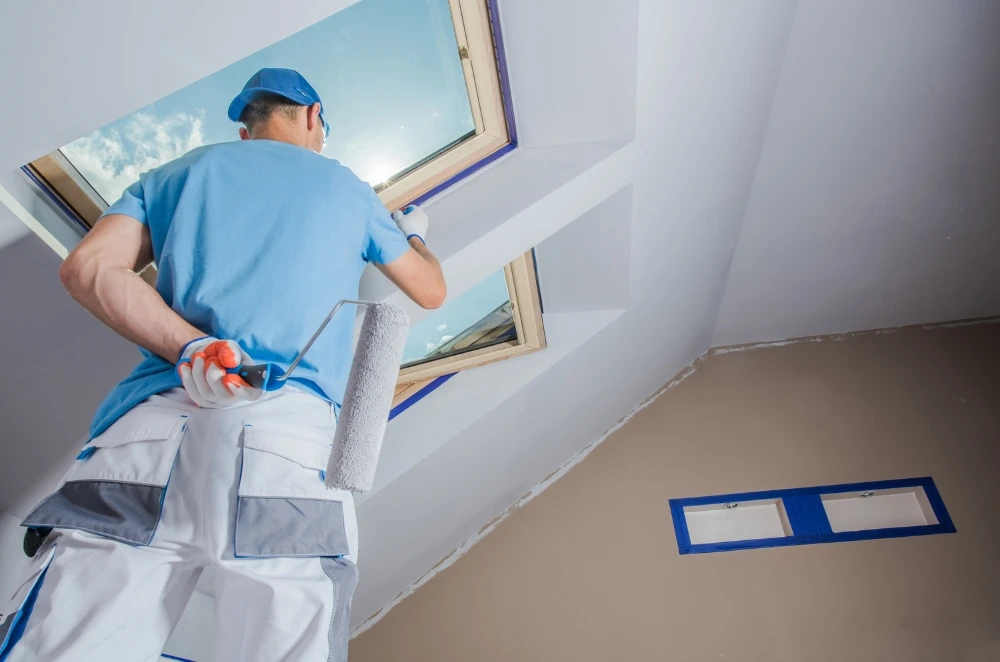There’s nothing quite like stepping into a freshly painted room. The colour feels alive, the edges crisp, and everything somehow brighter. Whether you’re prepping to sell or you’re just tired of looking at the same walls, a paint job changes how you feel in your home. Over the years, I’ve realised professional residential home painting isn’t only about rolling colour onto walls. It’s planning, picking materials that last, and knowing a few tricks that save time and hassle. A fresh coat of paint can completely shift your perspective, making tired rooms feel brand new. It’s one of those projects where a little effort goes a long way in boosting comfort and value.
Preparing your surfaces the right way
Any painter worth their salt will tell you: prep is half the work. Skip it and you’ll pay later—peeling patches, uneven finish, the works.
- Wash walls to get rid of grease and dust
- Sand shiny spots so the paint sticks
- Fill holes and dents with a decent filler
- Tape edges and lay down proper drop sheets
I learned this the hard way. Thought I’d skip sanding an old semi-gloss wall. Looked fine for about a month. Then the humidity hit, and half the paint bubbled off. A few hours of prep would have saved me from doing it all over again.
Choosing quality tools and materials
You don’t have to spend a fortune. But cheap brushes and rollers? They’ll cost you in frustration. Streaks, bristles stuck to the wall, patchy spots.
- Synthetic brushes for water-based paint
- Natural bristle for oil-based paint
- Microfibre rollers for smoother coverage
- Decent painter’s tape so edges stay crisp
One upgrade I noticed right away was switching to better brushes. Smoother coats, fewer do-overs, less cursing.
Understanding licencing and standards
In New South Wales, some painting work is regulated. It’s about safety, but also about doing things right. I didn’t know much about it at first—until I dug into it.
Understanding painting work regulations in New South Wales shows just how much detail is involved in staying compliant, even on smaller jobs. From approved materials to safe work practices, the rules protect everyone involved.
Better to check before you start than get stuck mid-project.
Picking colours that feel right
Colour sets the mood. Some shades make a space feel bigger, others warm things up or create drama. You don’t need an interior designer—just a bit of time to look around.
- Paint big test patches, not tiny ones
- Check colours morning, noon, and night
- Mix neutrals with one or two bolder spots
- Think about your furniture and lighting
I’ve seen friends pick colours off a swatch only to hate them on the wall. A pale grey that looked lovely under shop lights turned blue at home. Always test first.
Working with eco-friendly products
Paint isn’t like it used to be. The fumes are lower, and more brands care about what goes into the tin. Makes it easier to paint without worrying about air quality.
- Low-VOC water-based paints
- Primers with recycled content
- Natural pigments instead of synthetic dyes
- Responsible disposal—don’t just bin leftovers
There’s a lot of interest now in eco-friendly painting advice that shows you don’t have to trade performance for sustainability. Some of these products surprised me with how well they covered.
Timing your project for best results
Sydney weather can mess with your plans. Humid days slow everything down, and cold snaps do too. Timing matters.
- Aim for dry, mild days
- Ventilate to help paint cure
- Don’t rush coats or you’ll get drips
- Store paint where it won’t get too hot or too cold
I once painted a room in sticky heat. Two days later, it still felt tacky. Learned my lesson—check the forecast.
Creating a budget that works
Painting projects can cost more than you expect if you don’t plan ahead. Setting a clear budget helps you prioritise and avoid nasty surprises.
- Calculate the cost of paint, tools, and prep materials
- Factor in professional help if needed
- Leave room for repairs or extra coats
- Compare quotes from multiple suppliers or painters
I’ve learned that an extra 10–15% buffer in your budget usually covers the unexpected.
Preparing your home before you start
A little prep work around the house makes the painting process smoother and less stressful.
- Move furniture to the centre or out of the room
- Remove outlet covers and hardware
- Mask trim and switches carefully
- Keep pets and kids clear of the work area
Taking the time to set up properly saves headaches later, especially when it’s time to clean up.
Common mistakes to avoid
Even small missteps can cost you. If you know the traps, you’ll save hours fixing them later.
- Too much paint on the brush
- Skipping primer on patched spots
- Rolling too fast—hello, lap marks
- Rushing between coats
I’ve done all of these. Every time, I tell myself: slow down. It’s worth it.
Maintaining your painted surfaces
Finished the job? Good. Now keep it looking sharp. Paint isn’t set-and-forget.
- Dust or wipe with a soft cloth
- Touch up scuffs before they spread
- Avoid strong cleaners that dull the finish
- Repaint high-traffic spots every few years
Even the best paint wears. A little upkeep stretches out the time between big projects.
Staying inspired as your style evolves
Tastes change. One day you love a colour, the next you’re over it. That’s normal. Painting is the simplest way to update without renovating.
- Swapping out old hardware or light fixtures
- Repainting trim or doors for contrast
- Adding textured feature walls
- Using removable wallpaper as an accent
Your house should feel like you, even as that changes.
Bringing it all together
Painting your home isn’t just ticking off a to-do list. It’s part craft, part creativity. When you put in the prep and take your time, you end up with results that last.
I’ve learned it’s never only about the colour. It’s how you get there—choosing the right tools, paying attention to details, and giving yourself room to try something new. Whether it’s one wall or the whole place, every brushstroke moves you closer to a home that feels more like yours.



